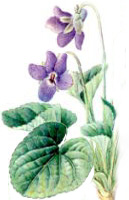Often you find the most interesting things in the small booths of a fair. Last year I found a hand lotion made of slug slime that was extremely effective. I do regret that I didn't buy a tin or two since the seller didn't attend Nordic Gardens this year. However she did have some similarities with the find of this year - they are both into slugs. This year I found a company called MicroLivestock Inc.
Since I'm planning an aquapnic system I've already been into micro livestock. It's pretty simple; it's a term for animals like rabbits, guinea pigs and slugs etc. that are small enough to be bread in small spaces and have edible (ie. tasty) flesh. Sometimes pigs are added to this category, but I think this is to stretch things a bit too far.
MicroLivestock Inc. are taking small cattle to a new level though - they are using genetic modification. Their big 'star product' is a variety of the spanish slug - their first successful designer animal - they've designed to A. relieve the nature of the pest and B. give us protein that is easy to catch and tastes well. The manipulated gene is dominant which means that if you release a batch of designer slugs into your garden they'll pass on their traits to comming killer slug generations.
And what are the traits? Well, they don't have the tough slime ordinary spanish slugs have - the designer slugs have normal slug slime, which make it easier for predators to eat them. The slug is easy to spot, is active in daytime and tastes good. No, it doesn't taste like chicken, the company has bet their hats on beef. I was treated to a few pieces of "snail jerky" they sold in their boot. I'm not fond of beef jerky (beef jerky is not a part of swedish food culture, and hasn't immigrated like chips and hamburgers), so I can't tell if the taste was good or not, but the idea was good. The slugs are easy to bread indoors, easy to slaughter and "self destruct" if they happen to run away into the wild. (You should have seen the faces of the boot demonstrators when I hinted that the last trait may not work to a hundred percent when tested in real life.)
But MicroLivestock wasn't all about slugs, they are working on micro cattle of different kinds. You should have seen the vid they were showing in the boot! A mini collie of the smallest kind were running around chasing something that on first sight looked like giant guinea pigs and then revealed to be sheep in the same scale as the collie. They weren't gene manipulated though, the company had tracked down some smallbuilt heirloom races and breaded them down in scale untill they reached the right size. The advantage of this method was that they could reach a stable variety relatively fast. (When you use gene manipulation you have to add some check up generations to see if it has some side effects - in many cases the manipulation weakens the general constitution of the animals.)
If the mini cows wouldn't work out the company is working with milk giving english lops (a giant rabbit breed). The plan is to not only make the milk taste like cow milk, but also to hamper the mechanism that makes the milk dry up when the rabbit's offspring have grown up. This way you don't have to stress the female with repeated births. (I still think this chimerism will be too tough to swallow for animal lovers.)
Gene manipulated food isn't popular right now, so I have to say it's brave to set up a booth at the biggest garden fair in Scandinavia. If you want to know more about the company you can take a look at their home page.
[Ed. April 2nd; as you may have realised this post was the Indoor Gardener April Fool's joke of the year. There is no MicroLivestock Inc. However, the hand lotion made from slug slime do exist...]
Wednesday, April 01, 2009
Subscribe to:
Post Comments (Atom)





No comments:
Post a Comment